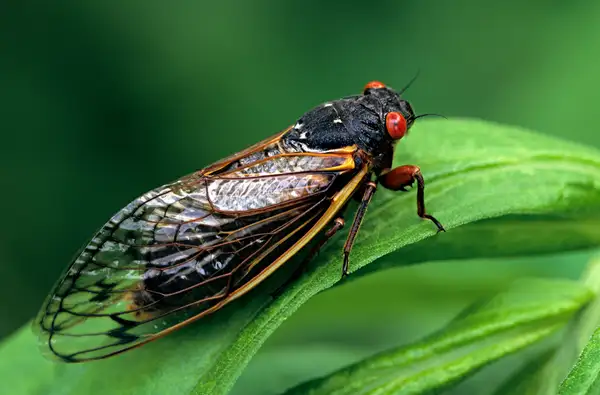You already know why cicadas are so noisy. But why do some of them only appear above ground every 17 years?
The 17-year cicada is a type of periodic cicada and is the homopteran insect with the longest known life cycle. Like clockwork, the largest swarms appear in the Northeastern United States every 17 years. Shortly after the 17-year-old cicada nymph hatches from its egg, it burrows underground, where, as its name suggests, it spends the first 17 years of its life. When it emerges from the ground, it only lives for another four to six weeks - just long enough to mate, fertilize or lay eggs, and then start the cycle all over again.

Contrary to popular misconception, periodic cicadas do not hibernate underground. Instead, they are conscious and active in the form of wingless nymphs, digging tunnels and feeding on the sap of tree roots.
The emergence of cicada nymphs from their underground homes is primarily related to temperature. After 17 years, the cicadas wait for optimal temperatures before heading to the surface, where the soil temperature about 8 inches (20 centimeters) underground reaches 64°F (18°C). That means cicadas emerge at different times in different parts of the U.S.: Soil in Virginia may reach ideal temperatures before soil in Illinois. But once this temperature is reached, all cicadas in the area feel it and head to the surface together.
But how does the cicada know that 17 years have passed? Although none of the theories have been proven, many scientists speculate that periodic cicadas possess an internal molecular clock that records the passage of time through environmental cues. As trees go through the seasonal cycle, shedding and growing leaves, the composition of their sap changes. As cicada nymphs feed on this sap, they are likely to detect clues about the passage of time. The 17th iteration of the tree season cycle gives nymphs a final hint: It’s time to emerge.
When cicadas emerge, they are not yet adults. They remain nymphs until their final molt. Once their fresh exoskeletons harden, they use their newfound wings to fly into the trees, and the males begin to emit loud mating calls.
Now we are back where we started. Newly born cicada nymphs fall or climb down from the tree where they hatched, burrow into the ground, and do not emerge until 17 years later.
animal tags: cicala
We created this article in conjunction with AI technology, then made sure it was fact-checked and edited by a Animals Top editor.